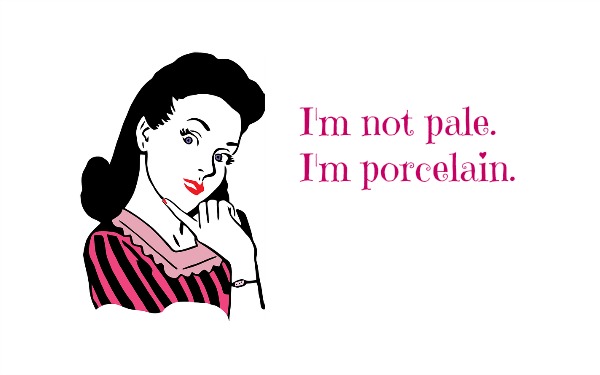Are you a foodie?
I am.
If you are, you probably agree that food is one of the greatest joys in life. I love making food, talking about food, and of course eating food. I am passionate about it.
Through my life, I have gone through a learning experience with food. I guess we all do. We all start in different places based on how we were raised. Were you raised in a vegan family or perhaps grabbing food on-the-go to the next activity? Something in between? Whatever it was, you were likely dependent on what was provided for you. But once we are adults, it is up to us to take our food experience and run, or not.
I would classify myself as an advanced moderate foodie. It has been a process to get here. I cook a huge majority of our meals at home. I like to reverse engineer my favorite meals from restaurants (with some hits and misses). I like to try new dishes, often combining the elements from a few recipes picking and choosing what I like best from each. I make baked goods from scratch. Don’t you hate “homemade” recipes that include premade mixes or sauces as a major ingredient? What is homemade about that!?
I thought it would be fun to write about food and all that is wonderful about it. Because there is a lot to write, I turned it into a series. This is part 1 about flavor. The next parts of the series will be about taste and the eating experience.
What is flavor?
That is a complicated question and even experts from various fields can agree on what is flavor.
According to ASTM International, the definition of flavor is…
(1) perception resulting from stimulating a combination of the taste buds, the olfactory organs, and chemesthetic receptors within the oral cavity; (2) the combined effect of taste sensations, aromatics, and chemical feeling factors evoked by a substance in the oral cavity.
Ok, that is pretty stiff. Technically, they are defining it, but it leaves me wanting more. Frankly, I think they left a couple factors out as well. It just doesn’t seem to do justice to the scale and scope that is the experience of flavor. I personally prefer this definition from The International Organization for Standardization. Their definition of flavor is…
Complex combination of the olfactory, gustatory and trigeminal sensations perceived during tasting. The Flavour may be influenced by tactile, thermal, painful and/or kinaesthetic effects.
Basically, flavor is a perception. I like visuals to help me understand, so I made a image to show the process that ends in what is flavor.

Or in a more mathematical way:
Food stimulates the senses (sight, sound, smell, taste, trigeminal/touch) then your brain processes that input with your unique knowledge (personal memories, emotions) and comes up with a flavor and what that means to you.
OR
Chocolate stimulates my senses (dark brown, silent, coffee, sweet and bitter, melting and smooth) then my brain processes with my unique knowledge (treats and celebrations and luxurious and pick-me-up, happy and celebratory) and comes up with chocolate…yum, I love it and I want more.
Because each step of the process is complicated, I break each step down to discuss the finer details. The steps are broken into input/stimulation, senses, brain, flavor.
Note: Flavor is complicated to study because there are many variables at play and each person is different. Scientists are still learning about how all the senses work together to create flavor experiences. In this article, I mention studies that have been done and their interesting finds, but that doesn’t mean it is the definitive word. To truly be proven, a finding needs to adhere to the rigour demanded of science. You can refer to my Resources to look further into the information I provide.
Input/Stimulation
Food
Obviously, this is what we are talking about. The end all and be all that is the love of food.
It is amazing what strong emotions it can provoke aside from providing life supporting nutrition. For the sake of these articles I include beverages into the food category. The diversity of food from all over the world can excite us all.
Environment
While I don’t specifically talk about the environment in the diagram above, it also plays a role. When you eat, you aren’t in a vacuum. Even if you were, that would still impact your dining experience. Whatever your environment, it will influence your senses while eating.
You know this to be true if you have ever had take-out. Same food in a different environment will taste different. I prefer to eat food in the environment it was cooked.
The smells, sights, and sounds around you will overlap and become a part of the whole flavor experience.
Senses
Smell
Smell is the primary factor influencing what is flavor to the consumer. Estimated to be 75% of the factor behind what is flavor. With recent science claiming the human nose can detect 1 trillion odors, that is a smorgasbord of scents.
Food companies take advantage of the fact that smell has such a large influence on flavor. It can take a similar base such as jelly beans or soda and change the taste dramatically by adding different flavorants/flavorings. These flavorants can be natural, nature-identical, or artificial. Cost and availability drive that decision for the food companies.
Odors can get to the olfactory receptor cells 2 ways. The first is through the nose and is called orthonasal olfaction. The second is through the back of the mouth and throat called retronasal olfaction. The latter is thought to be the more significant of the 2.
The odors then get absorbed through mucus to the receptor cells. Disease and age can cause changes to the mucus affecting the sense of smell, and thus flavor.
Humans have about 12 million olfactory receptor cells. The stronger the concentration of the odor the stronger the signal to the brain. If the flow of odor chemicals in the air is impeded, such as in a congested nose during a cold, the signal will never reach the receptor cells reducing or eliminating the smell signal.
The olfactory nerve endings in the roof of the nose send the message to the brain via the olfactory bulb. Scent messages are processed through the areas of the brain correlated with memory, emotion, and speech. A scent may even inhibit your speech for a moment.
Scent also is processed through the autonomic or involuntary nervous system. This is why a smell can have an immediate impact on our body. An odor can induce nausea or vomiting. It can also cause our mouths to water and get our gastric juices pumping. Let’s hope for the latter.
Anosmia is the inability to perceive scents. Without the ability to smell, sufferers miss an important link to memories and past emotions. Sufferers also cite feeling isolated or cut-off and can leave them feeling depressed. Because it robs them of a large portion of the flavor identifiers, anosmia makes food a different experience from most people.
Taste
Taste is the secondary factor when determining what is flavor to a consumer. It is limited to 6 formally identified tastes:
- Sweet
- Salty
- Sour
- Bitter
- Savory (Umami)
- Oleogustus (Fat)
In the near future, we may have more to add. There are studies to see if alkaline, metallic, or water-like will match the criteria to be officially named a taste.
Since taste is such a huge topic on its own, I delve more into it in another article.
(Coming soon: Love of food series, part 2)
There are taste buds scattered over your palate and throat as well as bundled together in papillae on your tongue. Everyone has a different number of taste buds. Additionally, each taste bud varies in the number and types of taste receptors it has. All the information combined from each taste bud forms the taste message sent to your brain.
Chemicals from food enter the gustatory pores on the taste buds. Inside are the taste cells. At the base of the taste cells are nerves. These nerves take the chemical information as well as the trigeminal (touch/temperature/pain) messages to the brain. There are 3 nerves supplying taste information to your brain.
• The facial nerve sends messages from the front 2/3 of your tongue.
• The hypoglossal nerve sends messages from the back 1/3 of your tongue.
• The glossopharyngeal nerve sends messages from your palate and throat.
Different tastes don’t just exist for our pleasure of food. They have been built in by evolution. Foods that give us nutrients and proteins are appealing. While toxic or rotting meat is unappealing. Our preferences were a matter of survival.
Geography also plays a role in how our tasting ability has developed. An example is the evolutionary role in different sensitivities to bitter. Exposure to environments with toxins or toxic plants has lead to extra bitter receptors in populations.
Are you a supertaster? There is variance between how many papillae people have. If you have a lot you are considered a “supertaster.” These people prefer milder food because they are already getting a lot of stimulation from the food. “Subtasters” are on the other end of the spectrum. With a low density of papillae they like a lot of flavorants to add to the taste.
I found information on supertasters and sensitive tasters. The sensitive taster information is confusing to me. The sensitive taster information is tied to a test based on mint sensitivity, and the cooling effect of mint is sensed by the trigeminal nerve and isn’t technically taste. So, I would call it a sensitive trigeminal nerve. I will go ahead and post the information under taste even though I believe it may belong in the next section with the trigeminal sense.
This test from The Taste Science Laboratory determines how sensitive of a taster you are. The test uses your reaction to mint as a rough guide. Based on your sensitivity to the taste, smell, and cooling sensation of mint, it assigns you to a “taster group.” If you have a…
- Very strong reaction, you are a highly sensitive taster. Highly sensitive tasters believe the flavor of food is important, they like a lot of foods, and they are often passionate about food.
- Moderate to strong reaction, you are a moderately sensitive taster. Moderately sensitive tasters believe the flavor of food is important, they like many foods and dislike a few foods, and they are often passionate about food.
- Weak to undetectable reaction, you are a mildly sensitive taster. Mildly sensitive tasters don’t believe the flavor of food is that important, they like many foods and dislike a few foods, and they are not passionate about food. (This just makes me sad for them. They are missing out big time.)
Make what you want of these “tests.” It is just kind of fun to try to figure out your likes and dislikes. Frankly, it doesn’t make sense to me because I am quite sensitive to mint, but really like spice and heat in my food.
Trigeminal senses
The trigeminal nerve senses the texture and temperature information of food. The trigeminal nerve has sensory and motor information from 3 branches: the ophthalmic nerve, the maxillary nerve, and the mandibular nerve. Just as the 3 nerves for taste and the olfactory nerve for smell, the trigeminal senses have its own nerve to send pain or irritant messages to the brain.
The texture of food and beverage affects how easily the chemical compounds can access the taste buds and olfactory system. Coarse or grainy foods are slow to get to where they are perceived. While creamy and liquidy foods quickly reach their intended targets.
Because of this time difference the intensity and onset will be perceived differently. Coarser food will have a slower onset with a lower perceived intensity than more liquified foods. While that sounds like a genius way to make food taste better, I think we can all agree that going to an all liquid diet isn’t something we want to do. Obviously, texture is just one more piece in the complicated puzzle of what is flavor.
Texture or mouthfeel is difficult to articulate and study. The slipperiness of oysters to the stinging fizz of carbonation. This is all being picked up and added to the equation. Scientists are just trying to catch up to what a hypertexturalist already know, texture has a huge impact on flavor.
One of the biggest challenges people have is believing that spiciness/heat is not a taste. It is literally a pain. That hot or spicy taste you get from Mexican, Indian, Tex-Mex, Szechuan, Korean, and Thai food is caused by a reaction from capsaicin or ethanol. The trigeminal nerve, that also senses hot temperatures, sends a pain message to the brain.
The same can be said for the cold or fresh, minty sensation. Spearmint, menthol, ethanol or camphor react with the nerve cells that also sense cold. This message also uses the trigeminal nerve to get to the brain. Regardless of how it feels, neither the hot or cold sensation is caused by a true temperature change.
Heating food can release more chemical compounds. This can make the food smell stronger impacting the flavor through smell. However, the impact of temperature alone on flavor is still being studied.
Sight
The color of food can affect your taste. A study found that a darker color red juice tasted sweeter to testers. A trend showed that the stronger the color the stronger the taste and flavor perception.
Another study colored white wine to appear like red wine. The testers described the wine with typical red wine adjectives, not those expected with white wine. It has been shown that uncolored or miscolored foods and beverages are more often misidentified. A lot of this boils down to what our expectations are and what color associations our culture has created.

Yuck or yum?
This bums me out about a bit because I would like to see less colorants added to food. Whenever I see a strongly colored food I am immediately suspect of the artificial coloring added. I guess it is good since those foods tend to be unhealthy choices. It is kind of a built-in warning system. Danger! Toxic! Poison!
There are other elements of the visual presentation aside from color that impact the experience of food. It just hasn’t shown up in studies. If you go to a top restaurant you will notice that the chefs already know what science hasn’t proven yet, that presentation counts.
Our brains, of course, can override the visual state of food. Dishes like hashes and stew can look quite unappetizing, but because of other factors like smell or memories we know that we can joyfully take part.
Sound
The jury is still out on this one, but interesting finds are being discovered.
Perhaps you have heard about music enhanced dining experiences. Heston Blumenthal used ocean sounds to accompany seafood dishes. The London restaurant House of Wolf served sonic cake pops with instructions to call a number and select either bitter or sweet to be played while eating the dessert. Then there is the rumor of Ben & Jerry’s ice cream having music tied to QR codes to complement specific flavors. Don’t you just love people that try new things?
It has been found that people preferentially match odors to musical features. Studies had listeners/smellers listen to various pitches, instrument classes, as well as look at various shapes while smelling scents. The initial information showed potential links to investigate in the future. If you want to test out the theory on yourself, grab a cup of coffee and watch Experiment: Does sound affect your taste? from BBC.
Another study has shown that playing high-frequency music while eating crunchy food will make it taste crunchier. Higher frequency sounds have also been shown to bring out the sweetness in candy. While low-frequency music increased the perception of bitter tastes in candy.
Music isn’t the only sound we may hear while eating. Other background sounds will impact flavor perception as well. Loud background noise can seem to reduce the tastes of salty and sweet. So concerts, planes, and construction sites aren’t the place to enjoy dessert. We already knew that airplane food wasn’t the greatest, am I right?
Brain
The brain now has a big job. It needs to process the information from smell, taste, trigeminal senses, sight, and sound.
The messages eventually all meet up in the insula which identifies it. That message then gets an emotion and meaning attached via the temporal lobe and cingulate gyrus.
Memory/Emotion
Because smell is strongly linked with memory, and autobiographical memory in particular, it can bring about strong emotions and feelings. Past emotional events and rituals are ingrained with scents such as the fragrance of a loved one or pumpkin pie on Thanksgiving.
This is also why comfort food gives us such pleasure. While everyone has different food that means comfort to them, it is usually tied to nostalgic feelings. Memories of being with loved ones or in a safe place make us feel we aren’t alone. Thus, the comfort in comfort food.
(Coming soon: Love of food series, part 3)
Flavor
Once the flavor is determined, we need to figure out what to do with it. The flavor and emotion get sent to the orbitofrontal cortex. Here we evaluate and decide how to react. Do we love it and want more? Do we think it is poison and spit it out?
Is the flavor enough to incite passion? Possibly enough to even build a career around. Many people think so. Others just enjoy and build family rituals around meals.
Whatever the case, cheers and good appetite everyone. Here’s to great food!
Are you a foodie?
What do you think about all of this? Do you share my love of food? We are all experienced eaters and know firsthand the joys and sorrows of food.
If you are a visual learner, here are three fun videos I found over at PBS learning media.
Do you consider yourself a foodie? What do you think makes you a foodie?
I would love to hear your memorable stories around food. Please share in the poll or comments.
Resources
About taste from Science of Cooking
About taste from The Taste Science Laboratory
Composing with Cross-modal Correspondences: Music and Odors in Concert from Springer
Experiment: Does sound affect your taste? from BBC
Flavor (or Flavour) from The Society of Sensory Professionals
FYI: Why does some food taste bad to some people and good to others? from Popular Science
How does our sense of taste work? from U.S. National Library of Medicine
How sound affects the taste of our food from The Guardian
Human nose can detect 1 trillion odours from Nature
Interactions in flavor from Food Science Department, Ohio State University
Psychology and smell from Fifth Sense
The New Science Behind Picky Eaters from Yahoo
The science of why you crave comfort food from Time
Taste molecules — The molecular basis of taste from Science of Cooking
What is flavor? from Science of Cooking
What is olfaction? from The Monell Center
What You See Is What You Taste, Says Scientist from National Geographic




















































